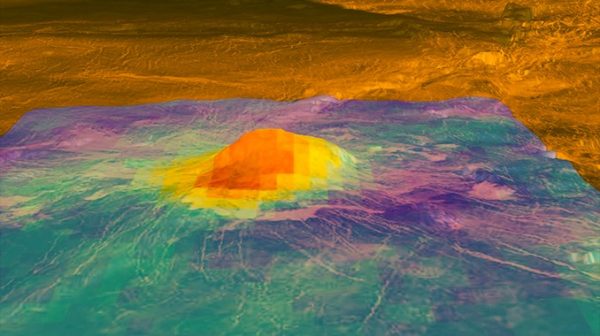Laboratory experiments suggest Venus may still be volcanically active – Astronomy Now Online

The European Space Agency’s Venus Express orbiter observed heat patterns on the slopes of a Venusian volcano that indicated relatively recent lava flows. But “relatively recent” in this case, based on data from the spacecraft’s Infrared and Visible Thermal Imaging Spectrometer, meant anytime between now and 2.5 million years ago.
New research, based on a laboratory analysis, indicates eruptions may, in fact, be happening today, making Venus the only other planet in the solar system with truly recent volcanism.
“If Venus is indeed active today, it would make a great place to visit to better understand the interiors of planets,” said Justin Filiberto, the study’s lead author and a Universities Space Research Association (USRA) staff scientist at the Lunar and Planetary Institute. “For example, we could study how planets cool and why the Earth and Venus have active volcanism, but Mars does not. Future missions should be able to see these flows and changes in the surface and provide concrete evidence of its activity.”
The Venus Express data allowed scientists to recognise fresh versus altered flows of lava on Venus’ surface. Filiberto and his colleagues recreated the planet’s hot, caustic atmosphere in the laboratory and monitored how olivine, an abundant basaltic mineral, reacted.
As it turned out, the olivine reacted, or “weathered,” very rapidly, becoming coated with iron oxide minerals within a few weeks.
“Our results suggest that these high-emissivity lava flows are not millions or even thousands of years old but were emplaced at most a few years before detection,” the team’s paper concludes. “If so, then Venus is volcanically active today because our experimental results show that the emissivity/reflectance signature of olivine should be obscured by oxide coatings within months to years.
“This active volcanism is consistent with episodic spikes of sulphur dioxide in the atmosphere measured by both the Pioneer Venus Orbiter and the Venus Express, which could have been produced by the same eruption that formed the young lava flows” observed by the Venus Express spacecraft.






